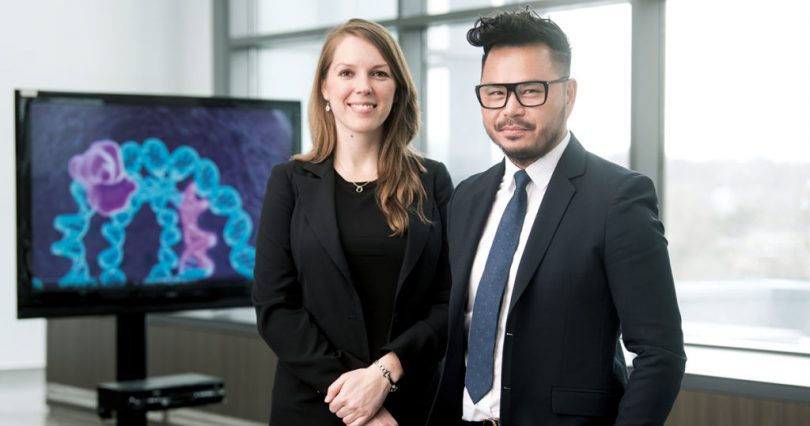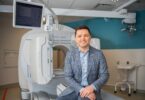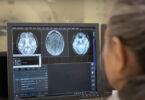Sunnybrook’s trailblazing efforts in the field of artificial intelligence (AI) and digital pathology began by looking into the past.
Odette Cancer Research Program scientist William Tran, MRT(T), PhD, set out to evaluate and improve care for women with breast cancer who undergo neoadjuvant chemotherapy to shrink their tumour ahead of surgery.
“Our overall goal was to see if we could predict the tumour’s response to chemotherapy. If we can better understand that, we could potentially empower our clinicians to adapt each patient’s therapy based on their risk of being either chemotherapy-resistant or chemotherapy-responsive,” he explains.
Donor support enabled the purchase of a digital pathology system, which is capable of mapping breast tissue samples and producing an intricate depiction of the tumour’s biology in just a few hours – but only with the patient data to power it.
Looking to the past to invent the future of pathology
To deliver on that piece of puzzle, Dr. Tran partnered with Dr. Fang-I Lu. The Sunnybrook pathologist and member of the Anatomic Pathology team knew that the key to precision oncology was to gather data from past breast biopsies to inform the development of a predictive algorithm.
“Think of digital pathology like a self-driving car that is capable of recognizing other cars and pedestrians on the road,” she says. “The more roads the self-driving car goes on, the smarter it gets. In much the same way, the more data we feed into the digital pathology system, the better equipped it is to recognize cancer’s many features.”
Dr. Lu and Dr. Tran began the arduous process of digging through Sunnybrook’s archived files, searching for the thousands of patients treated with neoadjuvant chemotherapy since the program’s inception in 2019. Dr. Lu’s quest for breast biopsy samples even took her deep into the hospital’s basement archives.
The largest tumour biobank of its kind in Canada
From a cohort of 1,200 patients, they amassed 485 tumour samples – the largest collection of its kind in the country.
“We were able to extract these samples, look at the digital slides and then evaluate clinical and pathological characteristics that then became pivotal in training the digital pathology system,” says Dr. Tran.
This initial “training phase” laid the foundation for much of the groundbreaking work Dr. Tran and his colleagues are conducting today.
Together with Sunnybrook medical oncologist Dr. Kasia Jerzak, Dr. Tran is testing the ability of the digital pathology system to find biomarkers and assess treatment response for very aggressive and locally advanced breast cancers – a step that he says can be completed in one-third of the time of the previous manual screening and analysis process. An accelerated timeline has the ability to both reduce stress for patients awaiting test results and improve the efficiency and effectiveness of personalized treatment planning and delivery.
A pathologist’s powerful ally
For Dr. Lu, the possibilities are game-changing. “In so many instances now, the computer is outperforming pathologists. It can even recognize features that can’t be seen with the naked eye. For pathologists like me, digital pathology is a powerful ally. It’s another set of eyes constantly checking and complementing my work.”
One of the team’s biggest priorities is to uncover the biomarkers associated with what medical oncologists call a “complete pathologic response,” the complete eradication of the tumour cells within the breast and surrounding lymph nodes. Research has shown a correlation between complete pathologic response and long-term survival.
Again, Dr. Lu has proved pivotal to much of this work.
“After we built the artificial intelligence framework, we invited her to look at our models and assess whether or not they were feasible,” explains Dr. Tran.
The team was recently awarded a $250,000 grant from the New Frontiers in Research Fund (Canadian Tri-Agency Organizations) to further refine the algorithm toward a goal of introducing it into clinical practice within the next year. Donor support was a key part of that successful application, providing the leverage the researchers needed to secure the federal government grant.
Says Dr. Tran: “We couldn’t do this work without our dedicated donors. Donor support is ensuring Sunnybrook continues to lead in this emerging and exciting field.”








